The Brahminy Kite, with its captivating chestnut plumage and graceful flight, emerges as a fascinating subject in avian wonders.
This majestic raptor, distinguished by its contrasting white head and chest, commands attention as it soars across Asia and Australia’s coastal landscapes, mangrove swamps, and inland wetlands.
Beyond its striking appearance, the Brahminy Kite showcases remarkable hunting prowess, deftly snatching fish and crustaceans with precision.
Yet, beneath its predatory guise lies a gentle demeanor, inviting observers to admire its serene nature and mesmerizing aerial maneuvers.
Join us as we explore this magnificent bird, embodying a harmonious blend of power and grace in the boundless tapestry of nature.
Physical Characteristics of the Brahminy Kite
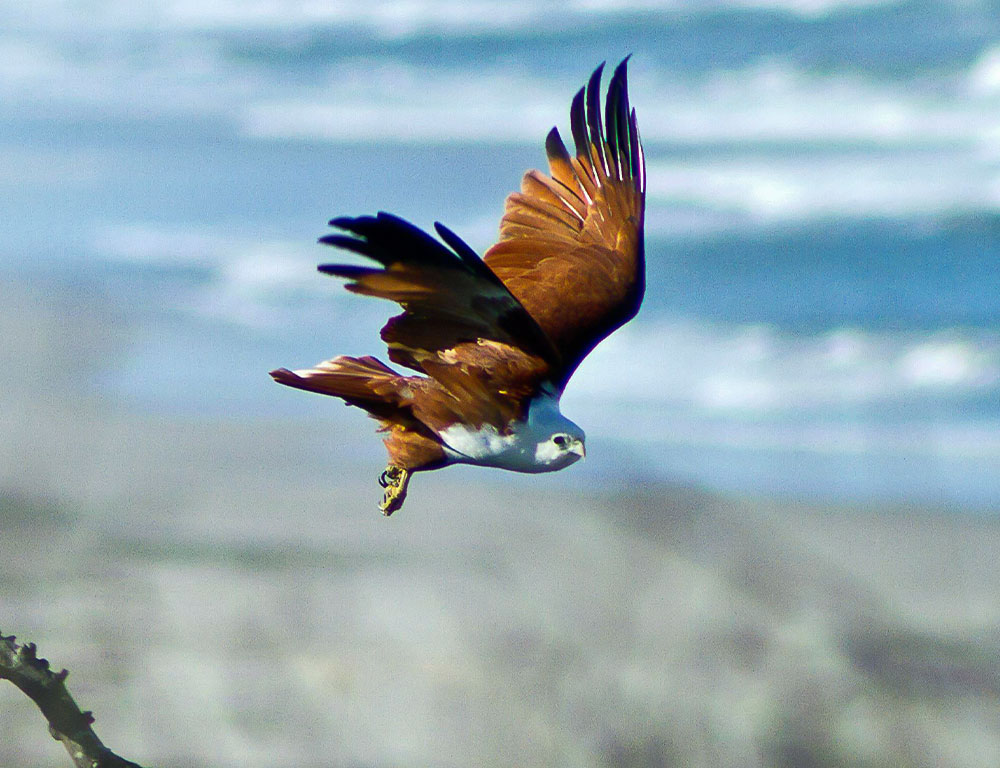
The Brahminy Kite possesses several distinctive physical characteristics that contribute to its unique appearance and adaptability as a bird of prey:
Size
The Brahminy Kite is classified as small to medium-sized, with adult body lengths typically ranging from 14 to 17 inches.
Wingspan
Their wingspan is impressive, averaging around 3.4 to 4.1 feet. This wingspan allows for efficient gliding and soaring capabilities, essential for their hunting and foraging behaviors.
Plumage Coloration
- Head and Chest: White feathers cover the head and chest region of the Brahminy Kite, creating a stark contrast against the rest of its plumage.
- Body: The body displays a rich chestnut brown hue, a distinguishing feature of this species.
- Wing Tips: The wingtips are adorned with black feathers, adding to the bird’s striking appearance.
- Eyes: Bright red eyes stand out against the white face of the Brahminy Kite, further enhancing its visual allure.
- Beak: The beak is yellow with a black tip, providing a sharp and formidable tool for capturing prey.
Weight
Despite their impressive wingspan, Brahminy Kites are not heavy birds. They typically weigh between 10.5 to 24 ounces (300-690 grams), with variations based on age and sex.
Legs and Claws
The Brahminy Kite has relatively short legs equipped with powerful claws. These features are essential for securely grasping prey during hunting maneuvers and maintaining stability while perching on tree branches or other surfaces.
Habitat and Distribution of the Brahminy Kite
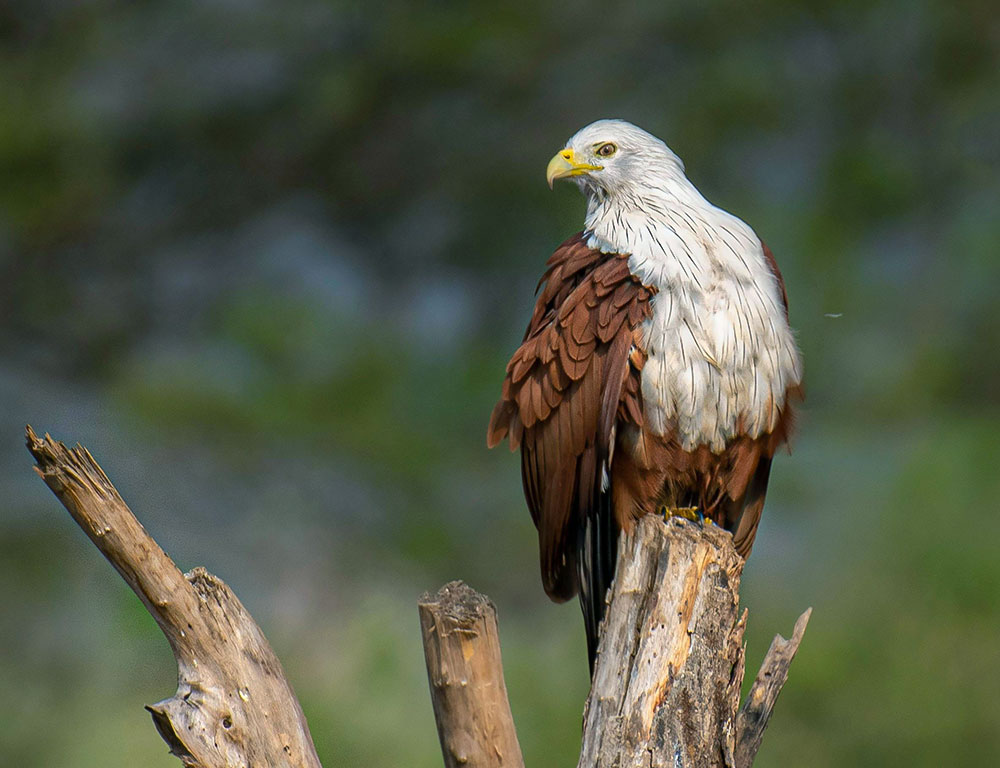
The Brahminy Kite, with its expansive range and adaptable nature, inhabits various habitats across coastal regions of India, Southeast Asia, and Australia.
Here’s a closer look at its habitat preferences and distribution:
Preferred Habitats
Brahminy Kites are commonly found in coastal areas, particularly near water bodies such as wetlands, marshes, mangroves, and swamps.
However, they are not strictly tied to aquatic ecosystems and can also be spotted inland in forest clearings, farmland, and even urban landscapes.
Adaptability
The bird’s habitat selection is influenced primarily by the availability of food sources. While they prefer areas rich in fish and crustaceans, they are opportunistic feeders and will scavenge if necessary.
Distribution
Brahminy Kites have a widespread distribution across their range, with varying population sizes in different regions:
- India: Estimated population size ranges from 10,000 to 20,000 individuals.
- Southeast Asia: Estimated population size ranging from 5,000 to 10,000 individuals.
- Australia: Estimated population size of fewer than 5,000 individuals.
Population Density Variations
Population densities of Brahminy Kites vary significantly from region to region. In some areas, such as northern Australia and eastern India, sightings are common, with the birds frequently observed soaring overhead.
However, sightings may be less frequent in other regions farther south or westward.
Behavior and Diet of the Brahminy Kite
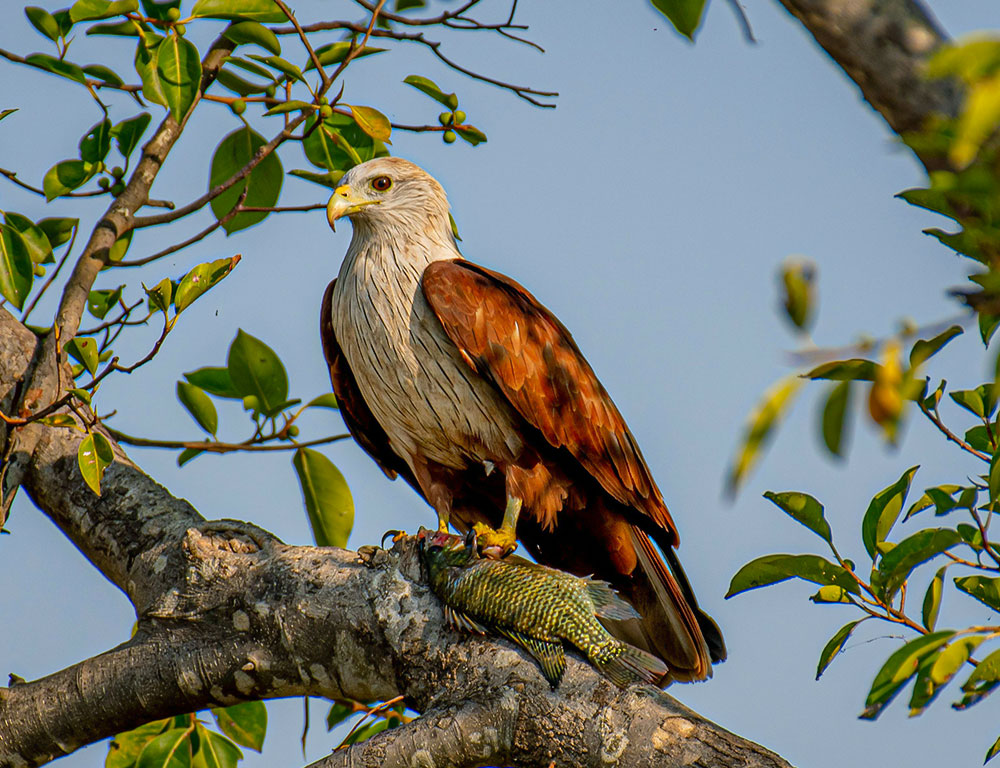
The Brahminy Kite exhibits fascinating behaviors and has a diverse diet, making it a captivating bird of prey. Here’s a closer look at its behavior and feeding habits:
Diet
Brahminy Kites are opportunistic feeders with a varied diet. They primarily feed on fish but are also known to consume small mammals, insects, carrion, and other prey.
Their adept flying skills allow them to swoop over water bodies to catch aquatic prey and forage on the ground in grasslands or forests.
Feeding Behavior
These birds are skilled hunters, adept at catching prey in water and on land. They are often observed soaring low over water bodies, using their keen eyesight to spot potential prey below. Their hunting techniques may involve diving or swooping to capture prey with their paws.
Territoriality
Brahminy Kites are territorial birds, especially during the breeding season. They fiercely guard their nests against potential threats and intruders. Their nests are typically built high in trees, protecting them from ground-based predators.
Playful Behavior
Juvenile Brahminy Kites are known for their playful behavior, often engaging in aerial acrobatics such as dives and rolls. These playful activities may serve as practice for hunting skills or as a form of entertainment.
Social Structure
Outside the breeding season, Brahminy Kites live solitary lives or form loose colonies. However, during the mating season, they form monogamous pairs, work together to incubate eggs and raise chicks until they fledge.
Reproduction and Nesting Habits of the Brahminy Kite
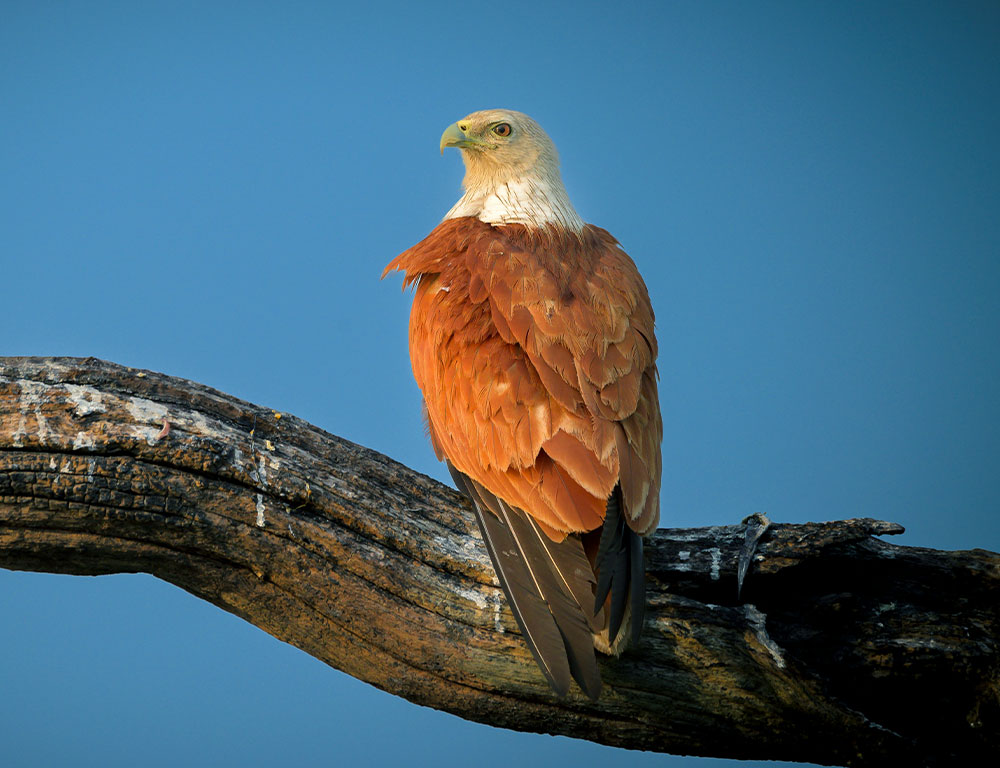
Reproduction and nesting behaviors play a crucial role in the survival and perpetuation of Brahminy Kite populations.
Here’s an overview of their fascinating reproductive habits:
Breeding Season
Brahminy Kites typically breed annually, with the breeding season between December and April. However, this timing can vary slightly depending on the specific geographical region.
Monogamous Bond
These birds exhibit monogamous behavior, forming lifelong pair bonds once they find a mate. Their courtship displays involve impressive mid-air acrobatics and vocalizations, highlighting their commitment to each other.
Nest Building
Both male and female Brahminy Kites collaborate in building their nest. They prefer tall trees near water bodies, such as mangroves or coconut trees. The nest is primarily constructed using sticks and can measure up to 1 meter across.
Additionally, the nest is lined with leaves for added comfort.
Egg Laying and Incubation
After the nest is complete, the female lays one to three eggs. Both parents take turns incubating the eggs for approximately 28-30 days until they hatch.
Parental Care
Once the eggs hatch, both male and female Brahminy Kites share the responsibilities of feeding and caring for their offspring. Unlike some bird species where only the mother feeds the young,
Brahminy Kite parents equally feed their chicks until they are ready to fledge, typically around 7-8 weeks after hatching.
Conservation Status of the Brahminy Kite
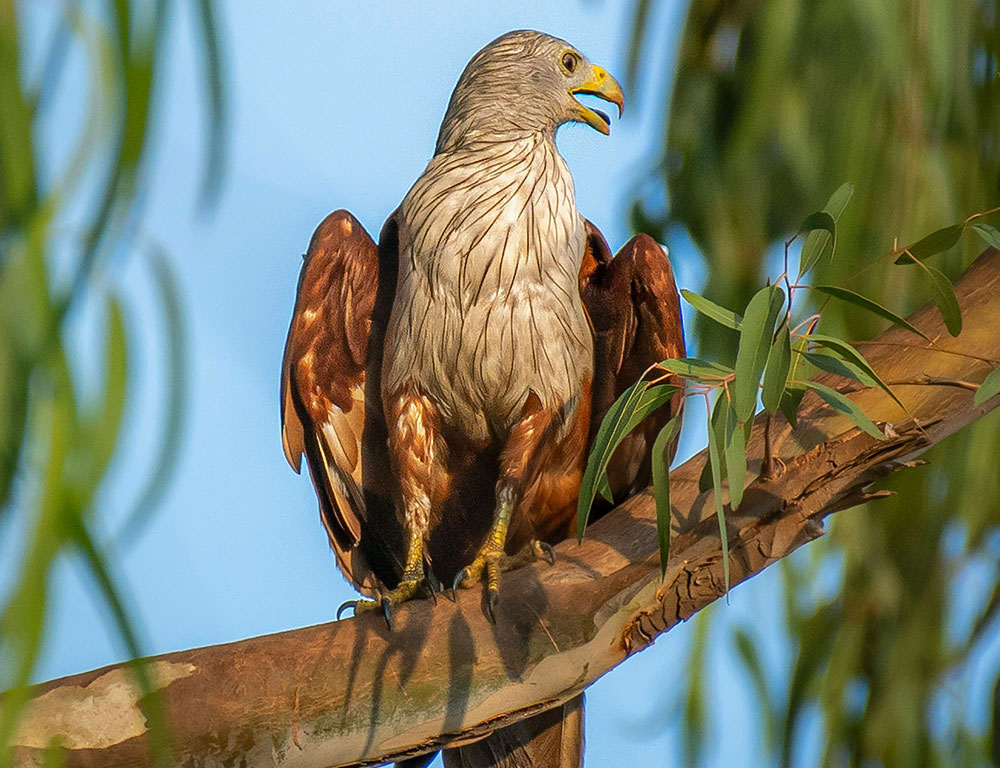
The conservation status of the Brahminy Kite, listed as “Least Concern” on the IUCN Red List, indicates that the species is not currently facing an immediate risk of extinction at a global level. However, this classification does not mean the birds are entirely threats-free.
Let’s delve deeper into what this status entails:
Habitat Loss
One of the major threats to Brahminy Kites is habitat loss. As human populations expand, urban areas encroach upon natural habitats, leading to habitat destruction and fragmentation. This can disrupt nesting sites and reduce available hunting grounds for the birds.
Pollution
Pollution poses another significant threat to Brahminy Kites. Various pollutants, such as oil spills and plastic waste, can contaminate water bodies and affect the birds’ food sources, such as fish and crabs. Additionally, plastic waste can pose entanglement hazards to these birds.
Conclusion
In wrapping up our journey into the world of the Brahminy Kite, it becomes evident that this bird is not only a sight of beauty but also a crucial component of our ecosystems.
Its striking red-brown body against a white backdrop and graceful flight capture our imagination.
Beyond aesthetics, the Brahminy Kite serves a vital role in nature as a scavenger, contributing to the cleanliness of its habitat. Despite facing challenges like habitat loss and pollution, concerted conservation efforts are underway to protect these majestic creatures.
As we conclude, exploring the Brahminy Kite has enriched our understanding of a stunning species and underscored the importance of preserving biodiversity for future generations.
So, let’s cherish each sighting of the Brahminy Kite as a reminder of nature’s magnificence and the interconnectedness of all living beings.